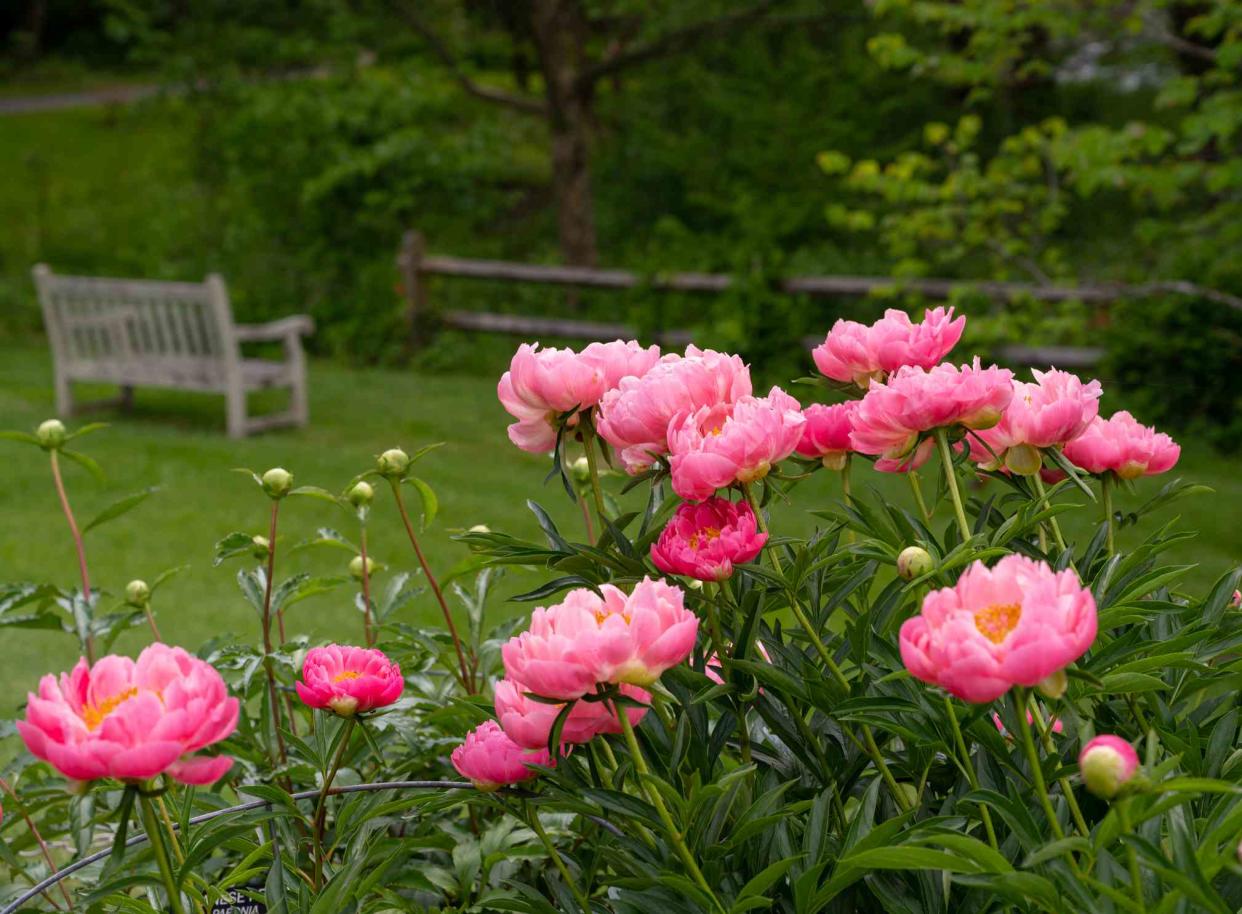This Is the "It" Flower for 2024—and You Might Already Be Growing It

jfbenning / Getty Images
As trends often go, what’s old is new again, and the garden is no exception. Romantic and whimsical gardens are back in style, along with many classic blooms like roses, hydrangeas, and 2024’s “it” flower—the peony.
Peonies are popular among gardeners, floral enthusiasts, and those planning events such as weddings. Plus, with over 6,500 varieties of peonies, endless colors, sizes, and shapes are available. Add on their ease of care and unfussy, low-maintenance nature, and experts say it’s no surprise that these timeless blooms are having a moment in 2024.
“This return to nostalgic plants is part of the larger trend we’re calling the Garden of Nostalgia and Romance,” says Katie Tamony, chief marketing officer at Monrovia, a chain of nurseries based in Southern California. “The connection to the past is merging with the need for attractive, low-maintenance elegance. Peonies fit this trend perfectly with their big, beautiful blooms, soft colors, and romantic look."
If you aren’t already growing peonies in your garden, this is your sign to add one (or several) of these gorgeous perennials to your landscape this year. Here are a few expert tips to help you start growing peonies.
Meet the Experts
Katie Tamony is the Chief Marketing Officer and trendspotter at Monrovia, a chain of nurseries based in Southern California.
Gavin Warwick is a professional landscaper and the founder of Boise Landscape Company based in Boise, Idaho.
Marco Picano is a professional landscaper and co-founder of Picano Landscaping based in Reading, Massachusetts.
Choose the Right Spot
First, it’s important to take some time and ensure you choose the right spot for a peony plant. Peonies don’t like being moved once planted, so aim to find a location that will act as the plant’s “forever home.”
“[Peonies] are sensitive to disturbance and have brittle roots," says Gavin Warwick, professional landscaper and founder of Boise Landscape Company based in Boise, Idaho. "Moving them can weaken their resilience, making them more susceptible to diseases, reduce their blooming, and damage their roots."
So, what should you look for when choosing the perfect spot for a peony plant? Warwick says the two most important factors are plenty of sunlight and well-drained soil. That means you should avoid heavy clay soils and overly shady locations. A lack of sunlight will result in fewer blooms, while wet and waterlogged soil can quickly lead to root rot and other fungal issues.
Want more gardening tips? Sign up for our free gardening newsletter for our best-growing tips, troubleshooting hacks, and more!
Patience Is Key
Peony plants get better with age, so it’s important to be patient with them. They may take a couple of years to establish and bloom, especially if you grow them from bare-root rhizomes. As the plant matures, you can expect a greater show of blooms each year.
“The wait is well worth it, as a well-situated peony can thrive for decades, providing stunning blooms each spring without much maintenance!” Warwick says.
Low Maintenance, Not No Maintenance
Once established, peonies are very low-maintenance plants, but that doesn’t mean a little regular maintenance and upkeep don’t go a long way. Pruning, regular mulching, and adding supports such as stakes or cages are all great ways to show your peonies some love and help them look and feel their best.
“We often recommend a staking system for the larger bloom varieties to prevent their stems from drooping under the weight of their own flowers," says Marco Picano, professional landscaper and co-founder of Picano Landscaping based in Reading, Massachusetts.
"Seasonal mulching helps retain moisture and stabilize temperature around their roots, boosting their growth. For optimal bloom health, we also implement a strategic fertilization plan in the spring as new growth appears, focusing on a balanced, slow-release fertilizer."
Tamony also says that modern breeding has made peonies even more easy to grow and with more blossoms than ever before.
Try Companion Planting for a Stunning Display
Lastly, utilizing companion planting strategies is a great way to compliment your peonies and take your garden display to the next level.
Since most peony varieties bloom in the late spring to early summer, consider planting some spring-blooming bulbs and late summer blooms nearby for a continuous display of gorgeous flowers all season long.
“For example, tulips and irises are great companions, as tulips will start the show in early spring with their vibrant colors, and as tulip blooms start to fade, peonies will take over, filling the garden with lush, voluminous blooms in late spring," Warwick says. "Following or overlapping with peonies, irises can offer a contrasting shape and texture with their unique flowers and sword-like foliage."
Ensure you research when your peony is set to bloom before heading out to buy companion plants. With thousands of peony cultivars, early, mid, and late bloomers are available.
Read Next: 9 Beautiful Peony Colors to Grow in Your Flower Bed This Spring
Read the original article on The Spruce.

